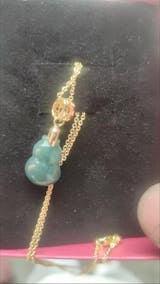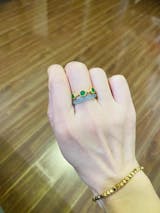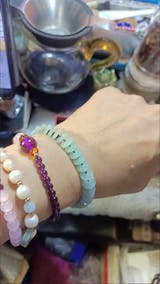Exploring Lacquer Art:History,Applications and Significance
Introduction
Lacquer art, a revered traditional craft in China, traces its roots back over 8,000 years. Originating from the sap of the lacquer tree, this ancient technique blends intricate woodworking, carving, inlaying, and painting to create objects of both functional beauty and profound cultural significance. Today, it continues to thrive as a bridge between tradition and modernity, inspiring global creativity and cultural dialogue.

1. Historical Development: Eight Millennia of Craftsmanship
1. Origins and Early Evolution
- Neolithic Era: The earliest evidence of lacquer use in China dates back to around 8,200 BCE, with lacquered bows and wooden vessels discovered at the Kuahuqiao site. The Hemudu culture (5,000–3,300 BCE) produced sophisticated lacquered pottery, such as the iconic red lacquered bowl, marking lacquer’s transition from daily tools to ritual objects.
- Shang-Zhou to Qin-Han Periods: Lacquerware became intertwined with bronze culture, featuring gold gilding, jade inlays, and elaborate carvings. During the Han dynasty (202 BCE–220 CE), techniques like “jia zhu” (thin lacquer layers) and “lacquer coffins” for nobility flourished, reflecting social hierarchy and burial customs.
2. Artistic Climax in Dynastic China
- Tang Dynasty: Known for its vibrant polychrome lacquerware, such as the Tang tri-colored glazed pottery, which blended colors with gold and silver accents.
- Song Dynasty: Emphasis shifted to minimalist “mono-color lacquer” (e.g., black lacquerware), celebrating the material’s natural luster.
- Ming-Qing Eras: Culinary masterpieces like “bai bao qian” (hundred treasures inlay) embedded pearls, coral, and ceramics into lacquer layers, epitomizing imperial opulence.
3. Global Dissemination via the Silk Road
Lacquer art spread eastward to Japan and Korea, inspiring techniques like Japanese “maki-e” (lacquer sprinkled with powdered gold). In Europe, it influenced Baroque furniture makers like André-Charles Boulle, who incorporated lacquer motifs into luxury designs.

2.Modern Adaptations: Bridging Tradition and Contemporary Life
1. Revival in Daily Use
- Functional Objects: Lightweight Fuzhou lacquer furniture and durable lacquerware (chopsticks, bowls) remain popular for their blend of tradition and practicality.
- Cultural Entrepreneurship: Young artisans like Wang Wenbo are modernizing lacquer art through wearable accessories (necklaces, earrings) and digital collaborations, with some achieving annual sales exceeding $100,000.
2. Artistic Experimentation
- Contemporary Installations: Artists like Tang Mingxiu use lacquer to create interactive sculptures exploring themes of nature and humanity.
- Fusion with Technology: 3D printing streamlines mold-making, while eco-friendly lacquers reduce environmental impact.
3. Global Cultural Exchange
Suzhou lacquer fans gained international acclaim as official merchandise for the 2022 Beijing Winter Olympics, while museums worldwide stage exhibitions highlighting lacquer’s cross-cultural legacy.

3. Cultural Significance: More Than Just a Craft
1. Philosophical Foundations
Lacquer art embodies “Tian Ren He Yi” (harmony between heaven and humanity) through its organic textures and symbolic motifs (e.g., dragons representing power, lotuses symbolizing purity).
2. Identity and Status
Historically, lacquerware adorned emperors, scholars, and elites, encoding social hierarchies through intricate patterns and materials.
3. Sustainability and Innovation
While synthetic lacquers dominate modern production, natural lacquer’s eco-friendly properties (anti-corrosion, biodegradability) inspire sustainable design trends.
4. Economic and Community Impact
Lacquer-based industries, such as Fuzhou’s “Tuotai” (lost-wax casting) lacquerware, drive rural employment and cultural tourism.

Conclusion
Lacquer art’s journey from ancient ritual objects to global cultural icons underscores its dual role as both a technical mastery and a living testament to human creativity. As artisans like Wang Wenbo and international designers reimagine lacquer’s potential, this Millennial Lacquer Craftsmanship continues to evolve—preserving the past while embracing the future. Whether adorning a palace, a household, or an avant-garde sculpture, lacquer remains a silent yet powerful storyteller of humanity’s enduring bond with nature and artistry.
Related articles:



























































